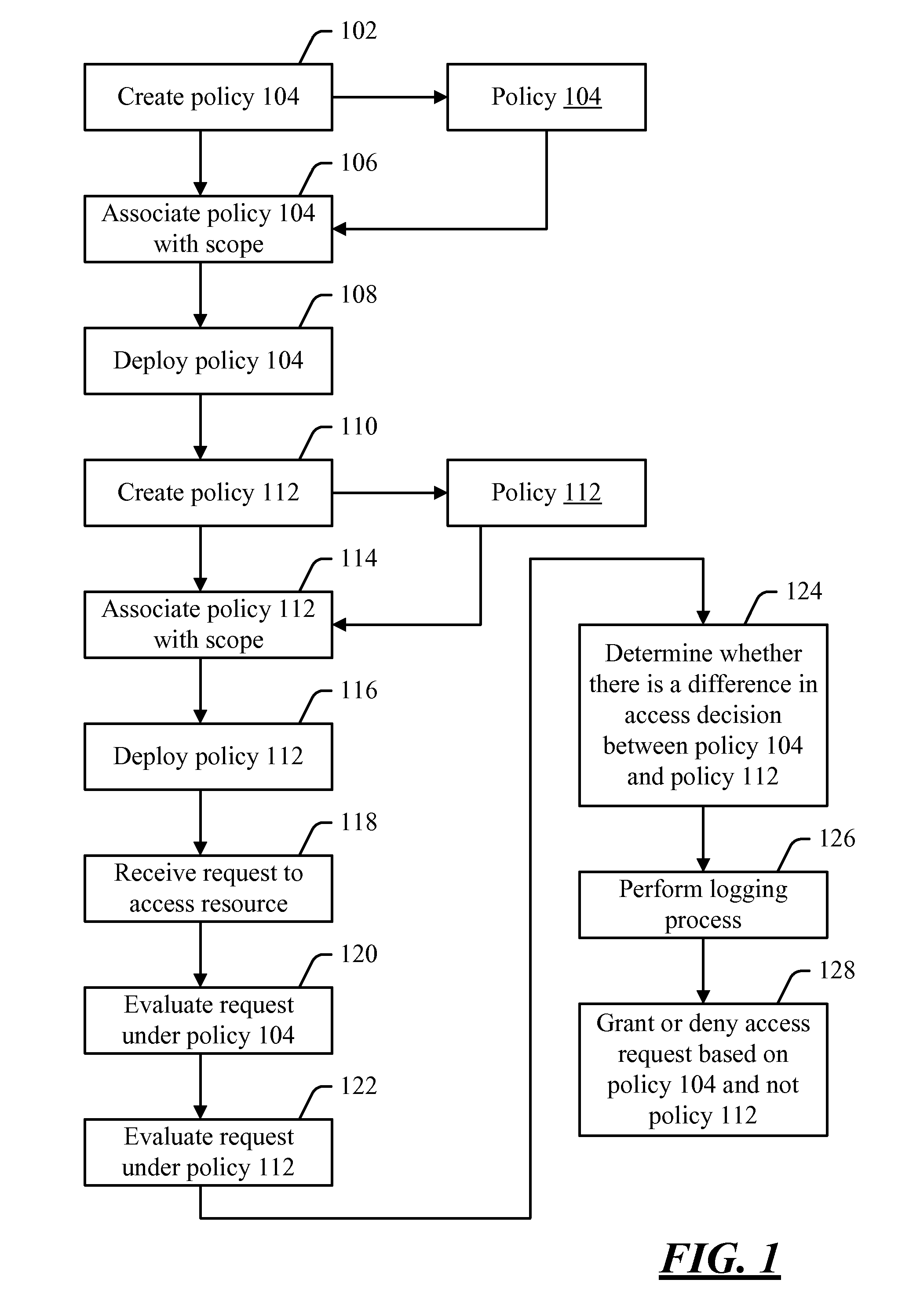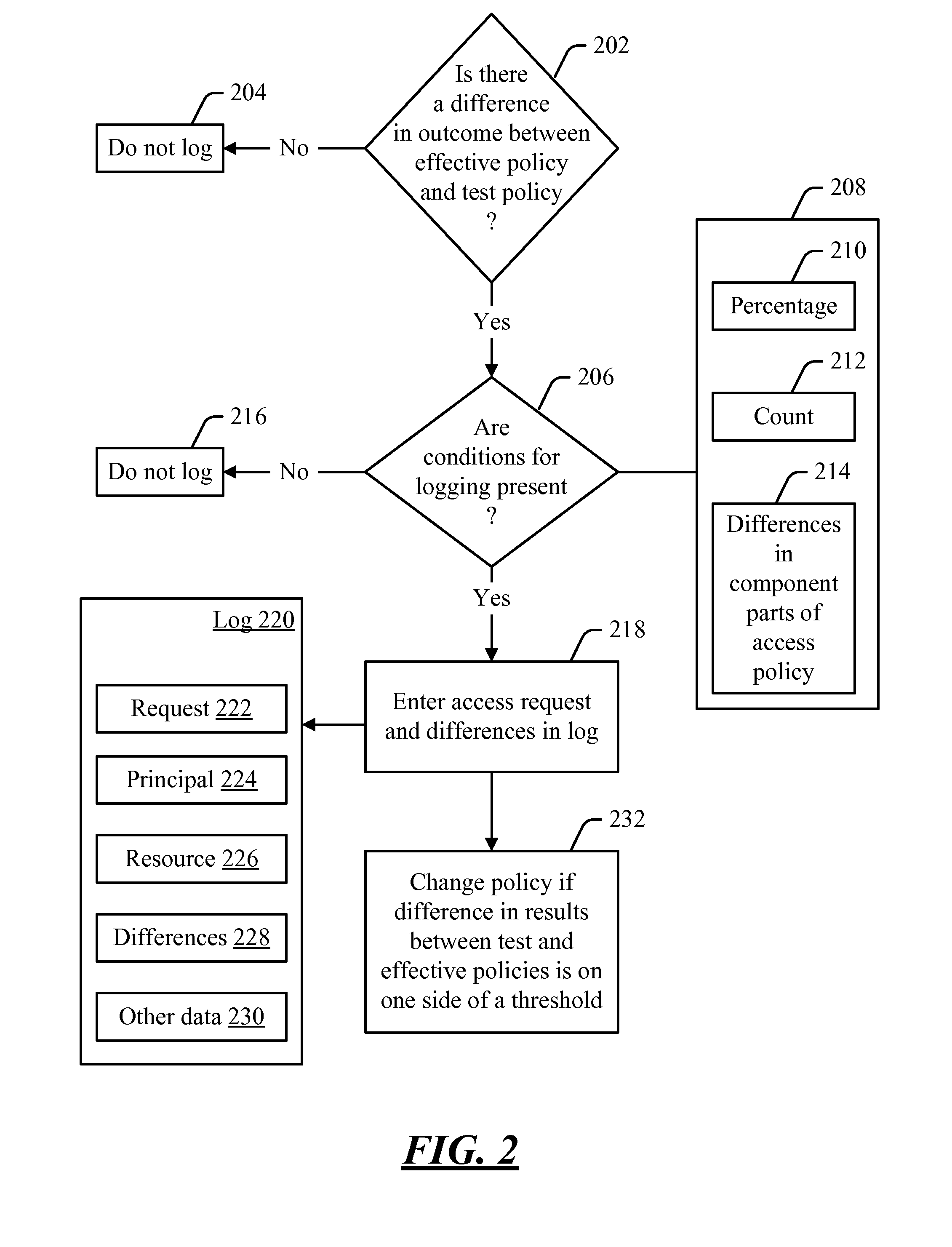Testing access policies
a technology of access policies and access policies, applied in the direction of instruments, nuclear elements, nuclear engineering, etc., can solve the problems of cost of an error in the policy, the difficulty of predicting the effect, and the complexity of the policies that govern access to resources
- Summary
- Abstract
- Description
- Claims
- Application Information
AI Technical Summary
Benefits of technology
Problems solved by technology
Method used
Image
Examples
Embodiment Construction
[0010]Access to resources may be controlled by a policy. When a request is made to access a resource, a determination may be made as to what policy or policies apply to the resource. Once the applicable policy or policies have been identified, the request may be evaluated against those policies. If the policy (or a conjunctive or disjunctive combination of the policies) allows the resource to be accessed, then the access request may be granted. Otherwise, the request may be denied.
[0011]Early access control systems were relatively simple—e.g., each file or other resource was typically labeled with the names of the principals or groups who could access the resource. In such a system, understanding the effect of a policy is relatively simple. For example, if the policy says “Joe can read / write the resource, and the Accounting group can read the resource,” then it is relatively straightforward to understand which access requests will be granted, and which ones will be denied. However, ...
PUM
 Login to View More
Login to View More Abstract
Description
Claims
Application Information
 Login to View More
Login to View More - R&D
- Intellectual Property
- Life Sciences
- Materials
- Tech Scout
- Unparalleled Data Quality
- Higher Quality Content
- 60% Fewer Hallucinations
Browse by: Latest US Patents, China's latest patents, Technical Efficacy Thesaurus, Application Domain, Technology Topic, Popular Technical Reports.
© 2025 PatSnap. All rights reserved.Legal|Privacy policy|Modern Slavery Act Transparency Statement|Sitemap|About US| Contact US: help@patsnap.com



